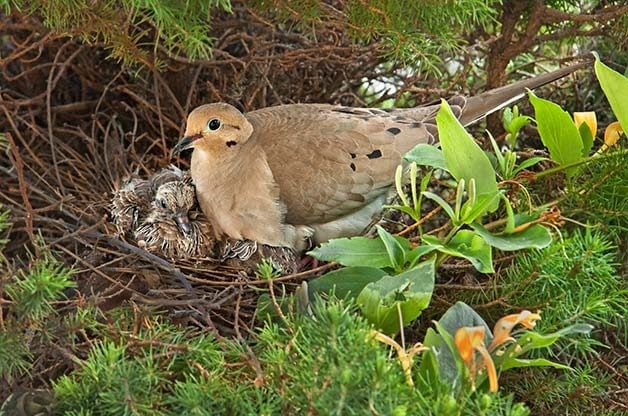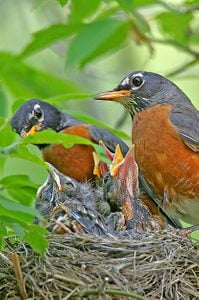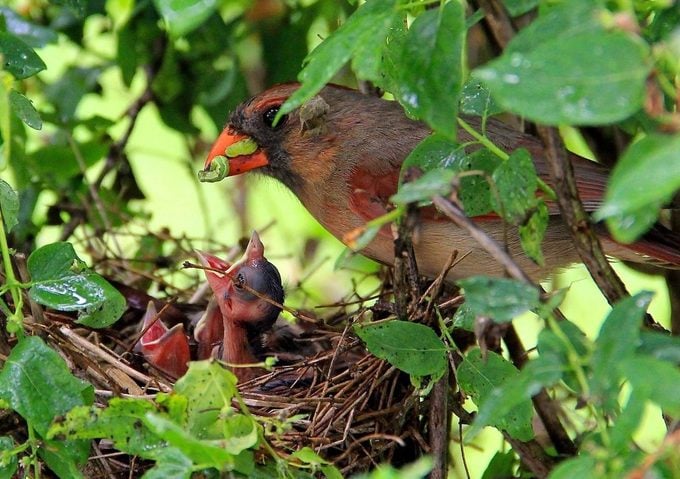Late Nesting Birds: When Do Birds Lay Eggs?
Updated: Jun. 14, 2022

Nesting season is not done yet! Learn the bird nesting basics of these late nesters and find out how to attract them to your yard.
When Do Birds Lay Eggs?
Bird nesting happens in spring. That’s common knowledge, right? Actually, it’s not always the case. Even though we associate nesting birds with springtime, some birds do nest and lay eggs in other seasons. Even as fall approaches and the days start growing shorter, you may still spot baby birds hopping around in your yard.
Most birds get down to the business of mating, nest building and egg laying as soon as possible in the spring to take advantage of the warm months while raising their young. Some species, such as great horned owls, get started even earlier, nesting in the dead of winter. Nonmigratory birds that don’t head south, like chickadees and titmice, also scout out nesting spots before the snow melts.
Check out sweet photos that show how birds flirt and attract mates.

Do Birds Nest in the Fall?
When it comes to late nesters, American goldfinches top the list. They don’t begin until late June, July or even September in some cases. That’s because, unlike most other species, they don’t feed their babies insects, just seeds.
By late summer, many wildflowers are in full seed production, so it’s the perfect time for goldfinches to have their young. They also like to use the seed fluff from plants like milkweed and thistles to line their nests. The late nesting strategy ensures that there will be plenty of nest-building material and seeds for both adults and hungry nestlings.

Multiple Broods
Even species that start nesting early in spring often have multiple broods over the course of the season. For these species, the sooner nesting starts, the sooner the birds can mate again and lay eggs so that they go into winter with as many offspring as possible, since many won’t make it through to the following spring.
Find out about burrowing and ground nesting birds.
American robins, for example, have as many as three broods in a year, with each nesting cycle lasting about a month from egg laying to the fledging of the babies. This means they don’t finish their nesting activity until late summer. The same is true for cardinals, which sometimes have up to four broods and are still laying eggs in August.
Among the most impressive late nesters are mourning doves. They have multiple broods, as many as six in one year at southern latitudes, extending their nesting season well into the early fall.
Learn what to do if you find a bird nest with eggs or a baby bird.
How to Attract Late Nesting Birds
Offer food. Pack your garden full of late-blooming flowers such as goldenrod, asters and sunflowers. These attract adult birds for both the seed and the insects on the blossoms.
Remember host plants. Butterfly host plants and trees (native oaks are ideal) attract caterpillars, which entice birds that feed those caterpillars to their young.
Put out a birdbath. Fresh water is a backyard essential: Young birds love to splash around.
Plant shrubs. This will support fledgling birds learning how to fly, because it will give them a place to hide from predators as they practice.
Next, check out everything you need to know about hummingbird nests.
